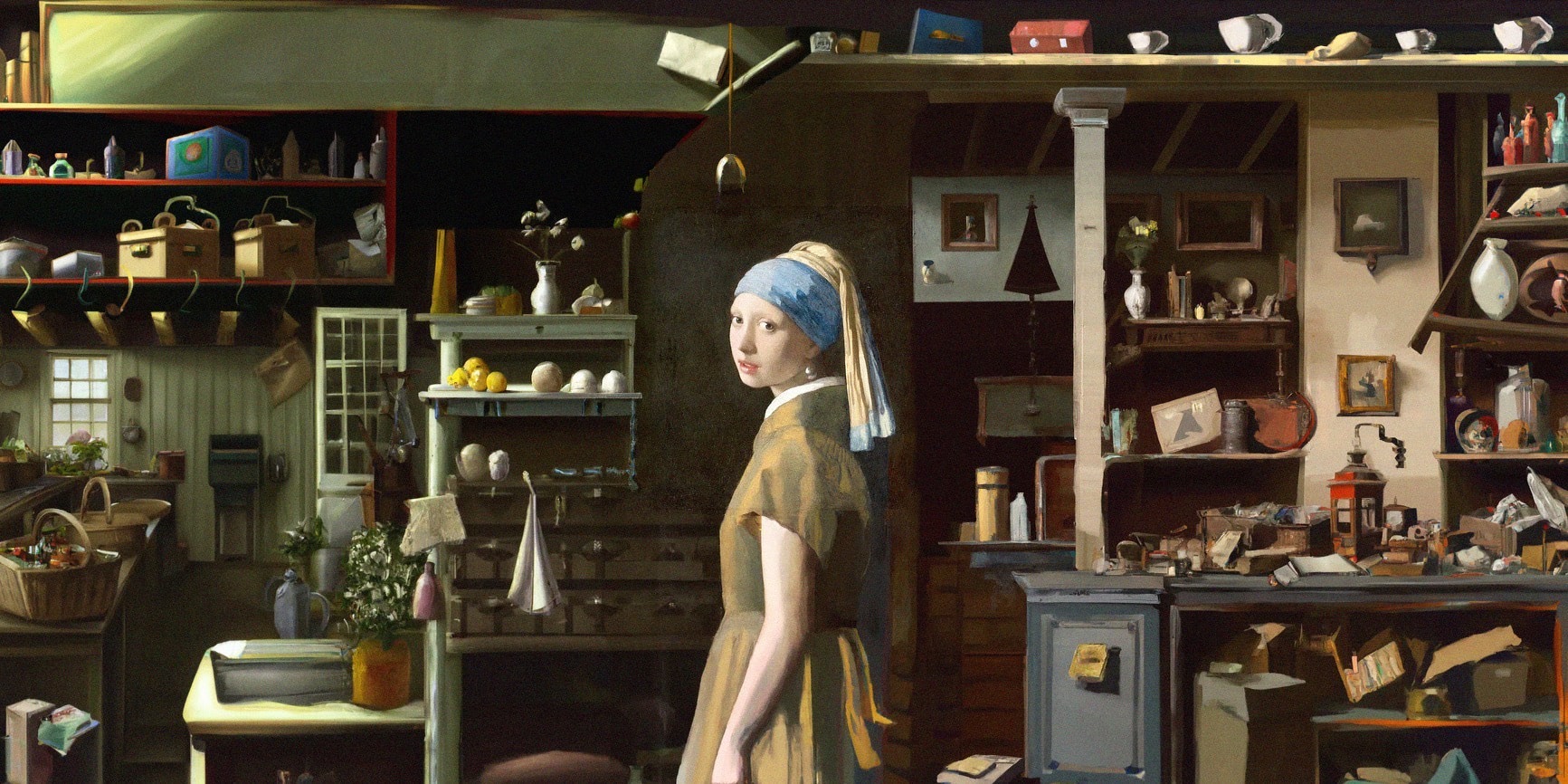The 21st Century has opened avenues for humankind that were once deemed impossible. Technological evolution offers multipurpose benefits and enables humanity to delve into the gist of scientific knowledge. Astonishing as it may seem, scientific advancement is proof of human intelligence. Ideologies have become practical tools; knowledge has been utilized to create technological miracles: all the gratitude to artificial intelligence.
“Artificial Intelligence is whatever hasn’t been done yet” -Larry Tesler
DALL-E, an exceptional scientific feat, is a visual storytelling tool. It uses artificial intelligence to create graphic representations of images and translates textual information into images. “DALL-E” is rooted in two words: “Salvador Dali, a famous artist, and Wall-E, Pixar’s movie.”. It is an excellent coalition of heterogenous ideas, concepts, and thoughts all bought together.
Apart from providing its users with a virtual reality experience, DALL-E is equipped to interpret the intricate relationship between objects making the entire experience transformative and immersive. It is best at transforming ideas into realistic graphics, and also excels at modifying the current images and adding new features to them. Overall it boosts the virtual reality experience for users.
Developed by OPEN AI, DALL-E aims to provide users with a user-friendly, safe, and experimental output. The first model for the system was made public in 2021; however, it had technicalities that needed to be fixed. For example, this version’s image would occasionally be blurred, resulting in a cluttered user interface. The company noticed the issue and modified the initial version of the software to release DALL-E 2 in April 2022.
The latest version can produce more realistic images and use different styles. DALL-E amalgamates three features: machine learning, natural language processing, and computer vision.

Operational Procedure: A Glance
DALL-E works through four different steps to draft the text input to an actual image:
- Pre-Processing is the first step, wherein the user adds the text describing the image they want to produce. The system converts the text into vectors. Using the language model GPT-3, the software attempts to understand what the user wants.
- Encoding is the next step, where the textual prompts tuned into vectors are used to create an image the user requested.
- Decoding or refining is the next step, where the system ensures that the image it creates is refined to the extent that it depicts the realistic nature of the picture. After multiple cycles of refining, the system will evaluate for any required changes.
- Output is the final step, where the final image is displayed on the user interface.
Being cutting-edge software in the AI system, it has numerous uses. Irrespective of its benefits, what makes DALL-E stand out? Let’s have a look at it.
- Text-to-Image Synthesis
DALL-E has a unique capability to transfer your textual description into graphical representations. It enables you to go out of the box and explore all the possible realities while visually representing how your ideas and thoughts integrate.
- Inventive outputs
Unlike other image-generating tools and software, DALL-E works beyond possibilities. It creates images based on surreal and imaginative ideas and produces results that were once unexpected and impossible—for example, a three-pawed cat or a flying table. Nothing is impossible for this tool to create.
- Extensive dataset
The software has been trained to process many data and has been tested multiple times. Thus, it enabled the software to develop and understand the relationship between visual objects and the textual information provided to produce high-quality images.
- Meticulously portrayed images
DALL-E has the remarkable potential to generate high-quality images that appear authentic. The image position, colours, appearance, and orientation are optimized according to user input. Thus, it allows to customize the image according to the user’s preferences.
- Diverse specialized applications
DALL-E has a wide range of applications, from design to product development. The visual possibilities it offers are endless, a few of which are mentioned below:
- Education
- Entertainment
- Product design
- Marketing
- Art

Perks of DALL-E
This tool has numerous advantages that make it a more accessible user interface. Some of these prominent advantages are explained below:
- Customization
You can customize the image generated according to your preference. Whatever you can imagine, any idea that comes to your mind, you simply put a few phrases into the text box and have miraculous results.
- Accessibility
DALL-E is an easy-to-use software requiring no specialized knowledge or computer language. Almost any individual with basic writing knowledge can easily use the software.
- Recapitulation
Users can make multiple iterations with existing images, edit them accordingly and add new features. Images can be iterated quickly and swiftly.
- Promptness
It is a quick image-generating tool. With just a few clicks within seconds, your vision is correct before you.
Irrespective of the immense benefits that DALL-E has to offer, there are still concerns out there regarding its use in the real world. Some foundational things could be improved within the software. Although it can process vast amounts of data, there are still images that the software might need help to translate.
Secondly, there is a slight doubt regarding the input of the text. The text input must be clear and explained for DALL-E to produce the exact image. However, if the text prompt is not well defined, the image produced may not be accurate. Another point of contention is the legitimacy of the system. It has the potential to generate images of any kind, any type, even if the scenario doesn’t exist in the real world.
Is the system legitimate and connected to realism enough for the user to believe it is another issue? Moreover, AI can interpret the literal meaning of the words. Words/phrases with similar meanings confuse the system, producing images contrary to your idea.
Undoubtedly, DALL-E is a revolutionary breakthrough in artificial intelligence allowing its users to go beyond their imagination and take them on a journey of possibilities. However, its practical use and potential to disconnect the user from the real world and phenomena are a considerable concern.
“DALL-E takes us one step closer to realizing the dream of machines that can truly understand and create visual content”-Fei-Fei-Li
References:
- https://www.techtarget.com/searchenterpriseai/definition/Dall-E#:~:text=Dall%2DE%20is%20a%20generative,specified%20by%20the%20user’s%20prompts.
- https://www.forbes.com/sites/ariannajohnson/2023/04/28/here-are-the-best-ai-image-generators/?sh=338740d93f3c
- https://www.assemblyai.com/blog/how-dall-e-2-actually-works/
- https://towardsdatascience.com/dall-e-2-explained-the-promise-and-limitations-of-a-revolutionary-ai-3faf691be220
- https://simplified.com/blog/ai-text-to-image/dall-e-1-vs-dall-e-2/
- https://www.sciencefocus.com/future-technology/dall-e-2-why-the-ai-image-generator-is-a-revolutionary-invention/
- https://www.techtarget.com/searchenterpriseai/definition/Dall-E
Also, Read: From Assistant to the Competitor: The Rise of ChatGPT as a Replacement for human interaction

Maira Masood is a BS Biosciences student at NUST, Pakistan. She aspires to be a geneticist and wants to play an active part in spreading scientific awareness through writings.

